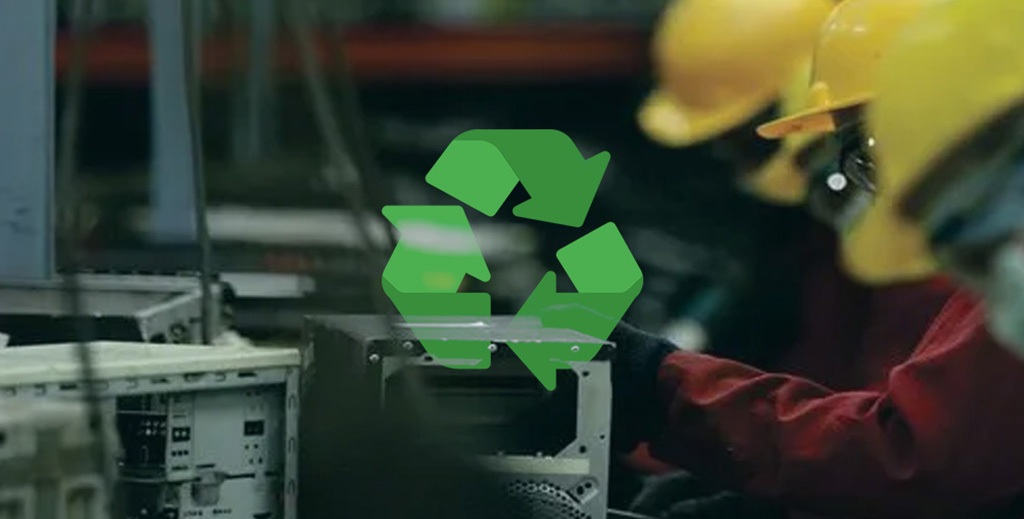
Worldwide, there is a growing concern associated with greenhouse emissions, and the process of IT equipment recycling assumes considerable importance for sustainability. But what is the definition of IT hardware recycling?
This is the process of removing out-of-use hardware and repurposing its components to improve or fix other gear. In the bargain, it extends the life of the other devices and prevents them from simply being thrown away. The procedure involves the sequential dismantling of computer hardware, segregating the pieces that contain hazardous materials, and recovering valuable materials. Such a process prevents the recycling of old IT equipment from entering landfills.
Why recycle IT equipment?
There are numerous reasons to recycle IT equipment, from complying with the law to addressing environmental issues. IT equipment recycling not only reduces the amount of waste that enters landfills, It also cuts down on the amount of raw material that is needed when there is an alternative to manufacturing new equipment. This is especially important as 80% of a piece of equipment’s lifetime emissions come when it is manufactured.
Hardware contains precious metals or materials that can be reused in other machines, like aluminum and copper. Another benefit of IT equipment recycling is that the refurbished parts or components that emerge from the process help companies save money. The reason is that it is a more cost-effective alternative than purchasing something new.
For most businesses, CSR, or corporate social responsibility, is a critical aspect of their mission and their reputation. This means sustainable practices and environmental conscience are major priorities for them. This is something that is expected to gain prominence in the days to come.
In short, recycling IT hardware is a win-win situation for both companies and the environment. As pressure grows from society and stakeholders tend to become more and more sustainable, recycling is a smart move for any business with an IT component.
What types of IT equipment can be recycled?
The fact is that almost every electronic or electrical device could be broken down into consistent components for recycling. This means that every piece of equipment or hardware that a company uses can be recycled, as they all contain materials that cannot be reused.
The benefits of IT hardware recycling led to increased sustainability scores for the company. When you partner with a company that provides third-party management, optimize the return on investment of the purchase. The reason is that the equipment is able to provide spare parts to extend the life of the hardware in a different data centre.
The workings of IT equipment recycling
If a company decides on IT hardware recycling, sorting out the different methods that comprise the hardware is a complex process. This involves the expertise of a specialized company that takes the discarded equipment to a pre-processing plant, where it is shredded into small pieces. After the process, the conveyor belt would transfer the shredded pieces under powerful magnets, which separate iron and steel from the e-waste.
The magnets are known to remove ferrous metals, and non-metallic metals are collected with electronic currents. The segregation of plastic is done in separate categories due to methods like density separation and infrared light. When you are recycling electronics, you will ensure that all these materials are salvaged for future use.
The laws that deal with equipment recycling
Just like other areas of pollution, e-waste is being taken seriously by governments. Regulation of electronics is done based on laws in various states. There is a need to comply with the relevant legislation of each country, which plays a crucial role in recycling IT equipment.
Disposing of sensitive data
When it comes to unused electronics, the recycling and decommissioning process also involves the secure destruction of data so that no sensitive information can be obtained by others. This is an important point to consider when you recycle old IT equipment. No company would want to come across sensitive and valuable information in the hands of competitors. So, they need to take measures to avoid such a situation as much as possible.
This may mean the physical destruction of the equipment. Data destruction, along with equipment disposal, ensures that the equipment is physically destroyed. This is a service that companies involved in recycling end up providing. The service is also known to take care of hazardous materials that may be part of the equipment.
To conclude, taking into consideration the complexity of the recycling process, it is beneficial for companies to partner with an IT equipment recycling service company. These companies ensure that they have strict protocols in place when it comes to recycling old IT equipment. They are known to provide their services at each and every step, ensuring responsible recycling, quality, and good results. Most of them are known to provide end-to-end recycling modules.